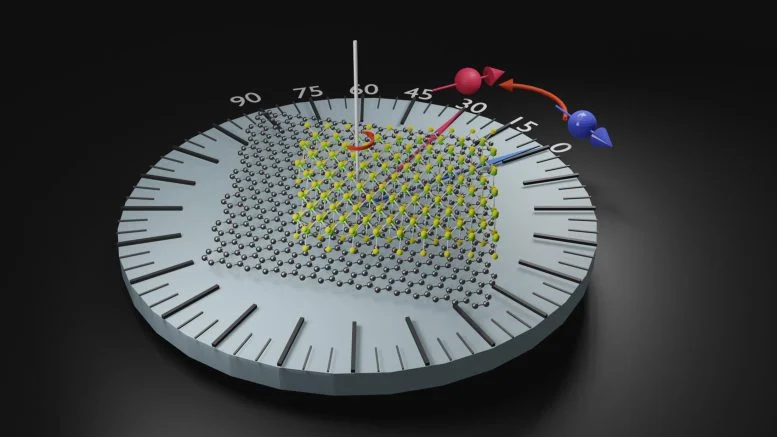
By Elhuyar Fundazioa September 12, 2024
Collected at: https://scitechdaily.com/the-magic-twist-how-scientists-are-rewiring-the-future-of-electronics/
Researchers have engineered a pioneering material that harnesses unique spin-related properties by twisting layers of graphene and tungsten selenide.
This innovative technique in the field of spintronics could revolutionize the development of advanced electronic devices, enhancing the integration of magnetic memories into processors and overcoming current limitations in handling spin currents.
Groundbreaking Spintronics Material
In conjunction with research staff from the Charles University of Prague and the CFM (CSIC-UPV/EHU) center in San Sebastian, CIC nanoGUNE’s Nanodevices group has designed a new complex material with emerging properties in the field of spintronics. This discovery, published in the journal Nature Materials, opens up a range of fresh possibilities for the development of novel, more efficient, and more advanced electronic devices, such as those that integrate magnetic memories into processors.
The discovery of two-dimensional materials with unique characteristics has led to a boom in research into these materials as new effects are produced when two layers of these materials are stacked to form a heterostructure. It has recently been observed that minute rotations of these layers can significantly change the properties of this heterostructure.
Innovative Twisting Technique in Material Stacking
“In this work, we studied the stacking of two layers of graphene and tungsten selenide (WSe2),” explained Ikerbasque Research Professor Félix Casanova, co-leader of the Nanodevices group at nanoGUNE and who led this work. “If the two layers are placed one on top of the other and rotated at a precise angle, a spin current is generated in a desired specific direction,” added Félix Casanova.
Spin (one of the properties of electrons and other particles) is normally transferred in a direction perpendicular to the electric current. Handling these spin currents is one of the main limitations of spintronics – electronics that uses spin to store, handle, and transfer information. However, “this work shows that this limitation in fact disappears when suitable materials are used,” stressed Félix Casanova.
Implications for Future Electronic Devices
The researcher concluded that “by simply stacking two layers and applying a ‘magic’ twist, new spin-related properties that do not exist in the initial materials can be obtained”. “The more flexibility we have in the choice of materials, the greater the design possibilities are for next-generation devices.”
Reference: “Twist-angle-tunable spin texture in WSe2/graphene van der Waals heterostructures” by Haozhe Yang, Beatriz Martín-García, Jozef Kimák, Eva Schmoranzerová, Eoin Dolan, Zhendong Chi, Marco Gobbi, Petr Němec, Luis E. Hueso and Fèlix Casanova, 27 August 2024, Nature Materials.
DOI: 10.1038/s41563-024-01985-y

Leave a Reply